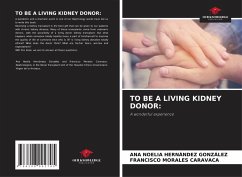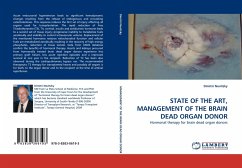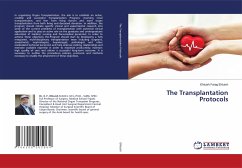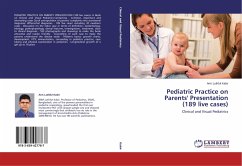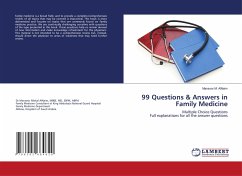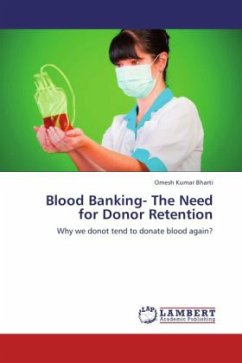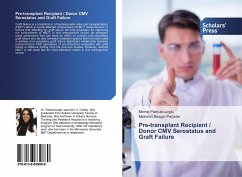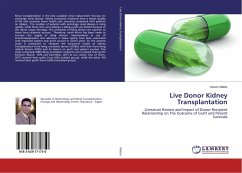
Live Donor Kidney Transplantation
Literature Review and Impact of Donor-Recipient Relationship on The Outcome of Graft and Patient Survivals
Versandkostenfrei!
Versandfertig in 6-10 Tagen
47,99 €
inkl. MwSt.

PAYBACK Punkte
24 °P sammeln!
Renal transplantation is the best available renal replacement therapy for end-stage renal disease. Kidney transplant recipients have a better quality of life and consume fewer health care resources compared with patients on dialysis . The number of patients with end-stage renal disease is rising rapidly, while those who can undergo a kidney graft are limited because of the donor organ shortage. The outcomes of living donors are superior to those from cadaveric sources . Therefore, much effort has been made to increase the supply of living donors. Improvements in use of immunosuppression and ad...
Renal transplantation is the best available renal replacement therapy for end-stage renal disease. Kidney transplant recipients have a better quality of life and consume fewer health care resources compared with patients on dialysis . The number of patients with end-stage renal disease is rising rapidly, while those who can undergo a kidney graft are limited because of the donor organ shortage. The outcomes of living donors are superior to those from cadaveric sources . Therefore, much effort has been made to increase the supply of living donors. Improvements in use of immunosuppression and advances in tissue typing have been associated with improved patient and graft survival in recent years .So the present study is conducted to compare the long-term results of kidney transplantation from living unrelated donors (LURDs) with that from living related donors (LRDs) and its impact on graft and patient survival. This study comprised 2485 kidney transplant recipients who received their grafts between March, 1976 and December, 2013 at our center. Out of them, 2075 received their grafts from LRDs (related group), while the other 410 received their grafts from LURDs (unrelated group).



